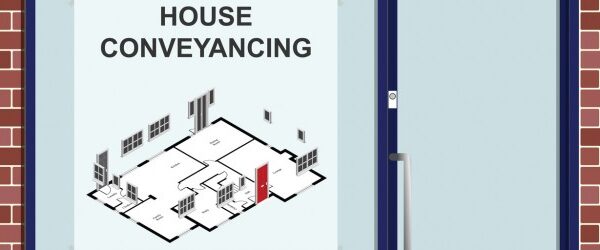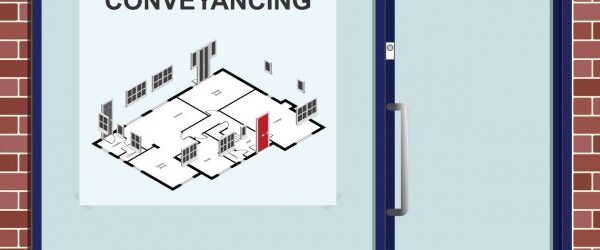Understanding The Conveyancing Process

When you’re buying a home, there are a lot of things to do. Between viewing all the properties, arranging mortgages and legal fees, making moving arrangements and everything else, you’re pretty stretched. Luckily, you as the buyer don’t need to worry about a lot of the more complicated elements of property buying, known as conveyancing. Instead, you can simply instruct your solicitor to start the process for you, and manage it to the end. But have you ever wondered what goes on behind the scenes?
In this post, we’re going to be referring mainly to residential homes and houses. This is because the conveyancing process for commercial properties is quite similar, with only a few small changes due to the business nature. But it is far more common for solicitors to undertake residential conveyancing and something that most people will come across at some point in their life. So, how does the conveyancing process work?
What Is Conveyancing?
Conveyancing is the process of legally transferring property ownership from seller to buyer. In other words, it’s all the legal, nitty gritty bits of buying a property. The conveyancing process starts when your offer on a house is accepted by the seller, and it ends when you receive the keys to your new home.
Who Does The Conveyancing?
Either a solicitor or a specialist conveyancer will handle the conveyancing process for you. Most people opt to use a solicitor, simply because they can help with other legal issues surrounding buying a house. It is possible for you to conduct the conveyancing process yourself if you aren’t taking out a mortgage at all, but it’s so hugely time-consuming and stressful that it’s very rarely done. From now on, when we say ‘conveyancer’, we will be talking about a conveyancer or solicitor – whichever you have chosen.
First Stages – The first stage in conveyancing for a buyer is to instruct your chosen solicitor or conveyancer to start the process for you. Often your estate agent will recommend one to you if you aren’t sure who to use – but be wary, there are usually commission agreements in place that can cost you more. Your appointed conveyancer will draw up a draft contract of terms of engagement with you, which will set out their charges and what they will be doing. Your conveyancer will then write to the seller’s conveyancer to confirm that they have been instructed and to request a copy of the draft contract and any other details around the property, such as title deed and standard forms.
Legal Work – Now the legal work can really begin. Here, your conveyancer will examine all the documents provided by the seller and raise any queries. They will also conduct property searches, in order to dig up any factors about the property that you didn’t find out from the estate agent or building survey. These legal searches will include
- Local authority searches
- Checking the title register
- Checking flood risk
- Water authority searches
- Chancel repair searches
- Environmental searches
- Optional and location specific searches (such as tin mining searches in Cornwall)
All of these searches will help you understand more about the property you are about to buy and the area around it. This means you will know in advance if they are planning to build a motorway in front of your house, or there is a big risk of flooding in your area.
Mortgages – You will need a mortgage in place before you can go any further than this stage. The conveyancer will be sent a copy of the offer by your bank and go through the conditions. They may also be able to arrange mortgage valuations and surveys for you, depending on what type of conveyancer you go with.
Contracts – Your conveyancer should have been in constant contact with you since receiving the draft contracts, and will be able to make sure that everything has been completed properly before contracts are signed. This includes ensuring that all enquiries have been answered, what fixtures and fittings are included in the sale, a completion date (usually 1-4 weeks after the signing of the contract) and that deposit funds are transferred to your solicitor. They will also help you exchange contracts with the seller, which usually involves both solicitors or conveyancers reading out the contracts over recorded phone call to ensure they are identical, before sending them to each other. At this point, when contracts have been exchanged, you have entered into a legally binding contract to buy the property with a fixed date of moving.
Completion – Between the exchange and completion points, your solicitor will lodge an interest in the property (which means the deeds are frozen for 30 days to allow you to pay the seller and lodge your application to transfer deed ownership). The seller will move out, and you will be focussed on getting ready for moving day. Before the completion date, your conveyancer will send a statement showing the final figure to pay at least 1 day before completion.
After Completion – After you have completed and moved in, the process isn’t quite over. Your conveyancer will still be tying up loose ends, including:
- Paying Stamp Duty Land Tax
- Sending your legal documents
- Sending copies of the title deeds to your mortgage lender
- Notify the freeholder (if the property is a leasehold)
- Send you their bill
And that’s that! As you can see, the conveyancing process is incredibly complicated, but that doesn’t always mean it’s long. If everything goes according to plan, many of these stages can be done very quickly. It’s usually other factors that cause long delays in property purchases. If you would like to know more about the conveyancing process or find out how Caversham Solicitors can help you buy your next house, just get in touch with us today.




